The Power of Inflationary Hedging
Posted on — Leave a commentThe hot topic in the financial world today is inflation, namely which way it’s going to go. For years it has been curiously low, but that might be changing and if so, implications for gold are significant.
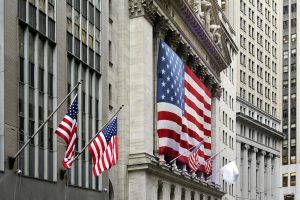
Since December 2015 the Fed has increased the benchmark short-term rate five times ranging between 1.25% and 1.5% Meanwhile, inflation remains stubbornly low as Fed officials continue to attempt to reach their 2% goal. Recent numbers, however, indicate they might be making progress.
“Prices excluding volatile food and energy categories rose 2.6% in January on a six-month annualized basis, up from a 1.1% gain in July and one of the strongest periods in years,” explains the WSJ. The result: “We think that it is a good time to own the precious metals,” remarked the president of EverBank World Markets. “We are seeing a burgeoning middle class and more disposable income in India and China, which should lead to more physical demand,” he continued. However, for many, the motivation to hold gold as an inflationary hedge against anticipated rises in inflation is just one part of the picture. Recent stock market volatility has prompted many to revisit their asset class allocation.
While analysts’ outlooks for the medium term are still largely positive, the pervasive expectation is that we’re entering a period of increased volatility. Equity investors will probably see gains, but the terrain they must cross to get there will be rocky.
Some of the volatility we’ve already seen stems from wage data. That is, payroll reports showed a 2.9% gain in average hourly earnings marking the highest annual rise since 2009. This news incited a sell-off in the equities market. Investors, it seems, fear that rising labor costs will defray corporate profits and temper share price appreciation. As a result, gold experienced a 1.6% increase on Wednesday while gold futures began trading at multi-year highs.
Meanwhile, many expect the Fed to make a minimum of three more interest rate increases this year. These expectations, however, are somewhat obscured by uncertainty surrounding the new Fed chairman Jerome Powell. Just weeks into his position, many are waiting to see how he behaves in response to the markets and broad economic data. At the same time, few expect any wild moves. Jerome and his staff have cited their intention to rigorously review all data before making any impactful decisions regarding rates.
“The market is starting to fall in love with inflation trades again. Gold could be the standout performer this year if that’s the case,” remarked the head of portfolio management services at Adroit Financial Services.
In these modern times, however, we have other options like headline-grabbing Bitcoin. Can the digital currency also act as an inflation hedge? Likely not. As the Financial Times puts it, gold is “Universally accepted as a global and long-term store of value and one that doesn’t demand a password when you want to dig it out from under your bed. It’s pretty; it’s useful; it’s really hard to fake; it’s easy to change into a fractional currency; and, crucially, it has history. An ounce of gold has, give or take, hung on to its purchasing power for thousands of years.”
4 Things You Might Not Know About the San Francisco Mint
Posted on — Leave a commentOn a late January morning in 1848, James. W. Marshall spotted flakes of yellow metal at the bottom a stream at Sutter’s Mill in Coloma, California. The shining substance, of course, was gold.
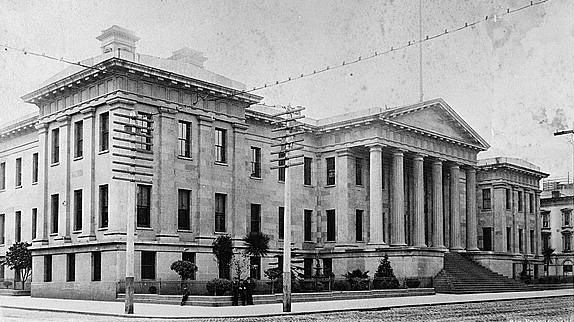
Despite the mill owner – John Sutter’s – attempt to keep the gold discovery a secret, the news spread like wildfire and as many as 300,000 gold-seekers descended upon the area over the next seven years.
Miners pulled an incredible 750,000 pounds of gold
out of the ground during the California gold rush.
Moving the Gold from California to the Philadelphia Mint
Henry Wells and William Fargo, saw huge opportunity and founded a banking and express transportation: Wells Fargo & Co. in 1852. They quickly established offices in San Francisco and near most of the major gold mining towns.
Wells Fargo began transporting gold from California to the Philadelphia Mint by stagecoach.
Those stagecoaches quickly became targets of robberies.
“I wish you and Nellie could see the coach that brought us to Bodie. It is a four-horse Concord stage. A shotgun messenger, with a sawed-off shotgun, sits up on the high seat in front with the driver. He has the Wells Fargo Express box between his feet. Going out it is full of gold bullion; coming in it is full of gold coin.”– From Doctor Nellie, the autobiography of Helen MacKnight Doyle, M.D., 1879.
The United States Mint became overwhelmed with the massive job of turning that gold bullion into coins. Transporting it to Philadelphia was not only time-consuming, but dangerous, as no railroads existed yet.
Thus, President Millard Fillmore in 1850 asked for the creation of a California branch of the United States Mint. In 1852, Congress approved the plan and the San Francisco Mint opened in 1854. The mint quickly outgrew its first facility, resulting in a new mint in 1874, affectionately called “The Granite Lady.”
Facts about the San Francisco Mint
- It produced over $4 million in gold pieces in its first year of operation in 1854.
- It Survived the Massive 1906 Earthquake and Fire. The San Francisco Mint was the only financial institution left standing after the devastating earthquake. Every bank in the city was destroyed or made unusable and their vaults could not be opened. The Old SF Mint served as a depository for all the disaster relief funds. A group of bankers came together and approved the Old Mint as a place were basic banking functions could take place for all citizens at a time of dire need.
- Collectors prize San Francisco Mint Coins. The generally lower production runs at this mint, versus the Denver or Philadelphia mint increase the allure of S-Mint coins.
- The San Francisco Mint is the only mint to produce the famous Morgan Silver dollar during every year of its production from 1878 to 1921. Learn why this coin is a great choice if you are building a collection on a budget.
The Highly Coveted “S” Mint Mark
These are just a few of the prized San Francisco Mint coins.
- The 1893-S Silver Dollar has the lowest mintage of any of the Morgan Dollars issued, which makes it one of the most coveted coins for collectors.
- The 1909-S Indian Head cent has a very low mintage of only 309,000 pieces.
- The 1912-S Liberty Head nickel is the first nickel minted in San Francisco and has the lowest mintage in that entire series.
What’s The Next Coin You Want to Own?
If there is a particular coin or set that you are trying to build, Blanchard has tremendous reach and respect within the rare coin industry
Do you have a wish list? Don’t see that coin on our site? Call Blanchard today and our numismatists can help source your wish list from collections around the world.
How Do You Mint a Coin? Start with a Contest
Posted on — Leave a commentSometimes you just need a fresh look. This was the thinking of the U.S. Mint in 1890. In fact, they decided everything needed a new look. In September of that year, legislation was signed which made all denominations of U.S. coins available for a redesign.
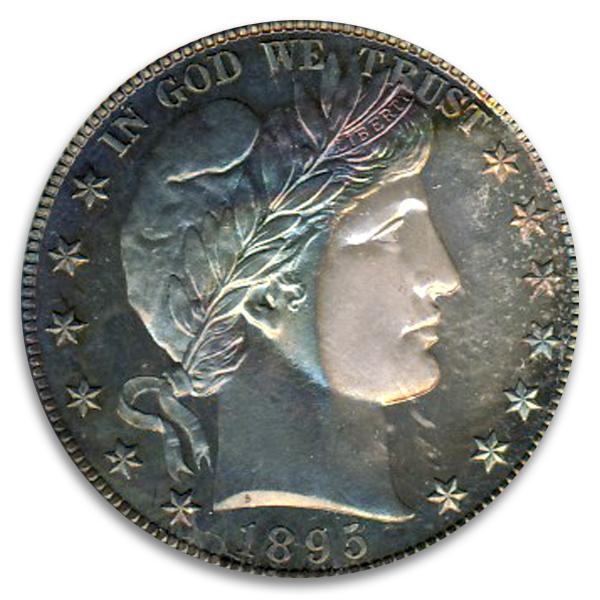
Chief engraver Charles Barber decided to hold a contest. Participants could submit low relief models of their designs for the half dollar. Next, they drafted a list of invitees. While the competition was open to the public, officiants wanted to encourage a few specific, New York-based artists to submit. The winner would receive $500 and the joy of having their work in every American’s pocket. Barber would be one of the judges.
Interestingly, many of the artists contacted about submitting designs responded with a counter offer to the terms set. They wanted the finalists to be judged by a group of peers. They also wanted the same artist to design both sides of the coin, and finally, they wanted more time. Leech declined these terms. It’s worth noting that this friction may have dissuaded more talented artists from entering designs.
Before long, the design submissions came in. What did mint director Edward Leech think of them? A “wretched a failure” he remarked. He continued that “only two of the three hundred suggestions submitted were good enough to receive honorable mention.” It’s possible that the failure of the contest stemmed from the stylistic differences of some of the judges. That is, the designs may not have been uniformly bad. Rather, it’s likely that infighting among the judges led to friction in settling on a winner.
Leech then turned back to Barber leaving the redesign task to him. They would need a new look for the half dollar, quarter, and dime.
Leech rejected Barber’s first design. Barber’s next submission was met with disappointment as Leech wrote that the lips on Lady Liberty were “rather voluptuous.” The argumentative back and forth continued until, finally, a design emerged. Upon their release, the reviews were largely positive.
Among the new collection were very few Barber dimes. Today the coin is considered among the rarest minted coin in the U.S. They have a history of selling for small fortunes. In 2005 one sold for $1.3 million. In 2007 another sold for $1.9 million. Much of the appeal comes not only from its rarity but its mystery; no one knows why so few were minted.
As with most coins, the Barber collection went through a redesign. In 1900 Barber changed the dies to produce thinner coins. Part of this change was motivated by collectors complaining that the originally issued coins would not stack properly. In time, many of the Barber coins were melted down into bullion amid an increase in the price of silver in the late 1970s and the 1980s. In total, the coin was minted between 1892 and 1915. They were produced at four mints, Philadelphia, Denver, New Orleans, and San Francisco
Gold Is a Safe Haven in the Stock Market Storm
Posted on — Leave a commentIn a flash the stunning January stock market gains disappeared. The S&P 500 erased the exuberant returns achieved since the start of the year as the stock market turned negative this week.

Price quotes that flashed green, turned to a sea of red. The pounding is historic. The Dow Jones industrial average recorded its biggest one-day point drop in history, collapsing over 1,000 points on Monday. Fear. Panic. Stock investors are getting out fast.
Except for gold. Precious metals climbed this week as investors turned to the stalwart of safety and wealth preservation.
The Trigger
Last week’s employment report pulled the rug out of investor confidence. Sure, the economy still created jobs. But, the unexpected jump in wage inflation spooked stock market investors.
Fears of soaring inflation and higher interest rates triggered a sea-change in investor sentiment.
Market Action Ahead
This may be a much-needed correction in the stock market, or it could be the start of something more severe. No matter the answer, stock market volatility is expected to pick up this year. Significantly. And, 2018 is just getting started. The herd is running scared. Other investors are making panicked, emotional financial decisions. That doesn’t have to be you.
In the 2007-2009 bear market, the S&P 500 lost approximately 50% of its value. Is your portfolio properly positioned for a downturn? There is a way you can mitigate losses during an equity market decline. The answer is gold.
Call Your Blanchard Portfolio Manager
Stock market collapses can be scary. You don’t have to navigate the market roller coaster alone. There are simple investment moves you can make now to protect your wealth.
Rely on Blanchard to help you make objective and logical long-term investments so you can you reach your financial goals. And, you could sleep better at night too.
The numbers back it up. Diversifying your portfolio with gold helps improve long-term performance returns, and it smooths volatility. Over the past 43 years, Blanchard has helped over 450,000 clients protect and grow their wealth through investments in tangible assets including gold and silver bullion and numismatics. Call us today.
Gold Sinks on Rising Dollar, Strong Jobs Data
Posted on — Leave a commentFriday was a rocky day for the gold market.
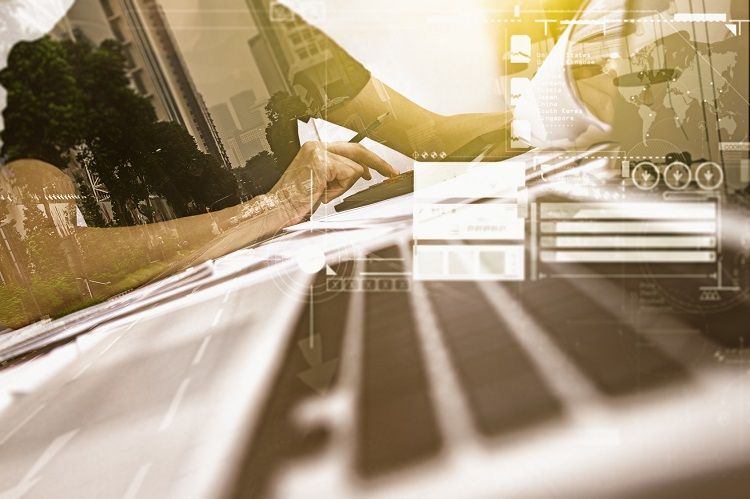
On Friday, nervous sellers knocked the price of gold sharply lower as the latest U.S. jobs data came in better-than-expected and also revealed upward pressure on wages.
Jobs, Jobs and More Jobs
The U.S. economy added 200,000 jobs in January, the Labor Department reported on Friday. That beat analyst’s forecasts of an 185,000 job gain last month. That signals the 88th month in a row that the U.S. economy had created new jobs.
Higher Wages Too
The key factor that spooked the stock market and boosted the U.S. dollar was a big jump in average hourly earnings of 9 cents to $26.74. That marks year-over-year wage growth at 2.9% and highest rate of growth since June 2009. Why is this important? It signals that finally – inflation may be starting to accelerate.
What about Gold?
Spot gold ended Friday at $1,331.15 per ounce, down from the previous London PM gold fix at $1,341.35. Stay up to date on current gold market action via live prices from Blanchard here.
But, wait, you might be asking – why did gold fall – if the economic data showed that wage inflation is rising? Good question!
In the zero-sum game of finance, often times when one asset climbs, another falls. Gold, which is priced in U.S. dollars, often moves in the opposite direction of the dollar. When the dollar goes up, gold typically falls. And, vice versa, when the dollar falls, gold usually gains.
That inverse relationship kicked into high gear on Friday and pressured gold lower, as the U.S. dollar gained.
Blame it on the Fed
The U.S. dollar strengthen on Friday, after the latest jobs report, as traders bet that the Federal Reserve may need to hike interest rates at an even faster pace in 2018, due to a pick-up in inflation. That’s bad for the stock market, but boosted the U.S. dollar, and in turn hurt gold.
There are some on Wall Street who say the “Fed is behind the curve” or that the central bank has kept interest rates too low, for too long. Now, if inflation begins to accelerate, the Fed may be forced to hike interest rates at a faster pace in 2018. Some analysts believe the Fed could hike as many as four times this year, as opposed to the three that is already expected.
What about my portfolio?
In the big picture, rising inflation is bullish for gold. If widespread inflation begins to emerge, investors will turn to gold in droves, pushing the price of precious metals higher.
Friday’s action was a temporary blip lower for gold. In fact, for long-term precious metals investors, it creates an even better buying opportunity.
Buy low, sell high. Don’t wait to buy gold when it’s climbed sharply higher. Make your acquisitions now, at what may well be the lowest price point in 2018. Act now. 2018 is just getting started and things and markets are already heating up.
4 Reasons It’s a Great Time to Buy Silver Coins
Posted on — 1 CommentIt’s a great time to buy silver bullion. Silver gained about 6% in 2017, while the more expensive gold climbed about 12% last year. If you’ve been considering investing in gold or silver bullion, here’s four reasons why you should scoop up some silver right now.
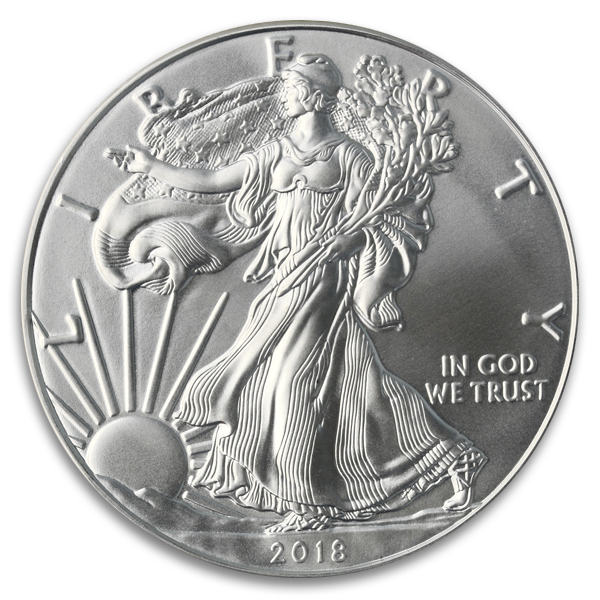
- Industrial Demand is Forecast to Grow for Silver in 2018
Silver benefits from both investment and industrial demand. Among metals, silver boasts one of the highest levels of electrical conductivity. Silver is used across a diverse range of industries from automotive to medical devices to solar panel applications. “We expect the growth to continue this year and set another record for silver demand, driven by large scale solar capacity additions and continued strong demand uptake from individual households, particularly in China,” the Silver Institute said. Growing demand pushes prices higher. That means current levels of silver around $17.44 an ounce offer an attractive entry point for investors.
- From Rings to Bracelets to Necklaces, Consumers Love Silver Jewelry
About one-fifth of total global silver demand emerges from the jewelry sector. Silver jewelry demand grew about 1% in 2017 as consumers favor the neutral color and as a reasonably priced alternative to gold. Jewelry demand is forecast to rise by 4% in 2018. Again, more demand equals higher prices.
- Global Silver Mine Supply Is Falling
While demand for silver is growing from the industrial and jewelry sectors, global mine supply is contracting. Global silver mine supply fell 1% in 2016, shrinking for the first time in 14 years. That trend continued in 2017, as global mine supply fell another 2%. What about 2018?
“Production disruptions out of South America, along with a decline in capital expenditure among the primary producers in the past five years, is expected to constrain output again this year,” the Silver Institute said. Shrinking supply, alongside rising demand is a recipe for higher silver prices ahead. Don’t delay your investment plans. Current prices of around $17.44 an ounce could be the lowest price investors will see all year for silver.
- The Gold/Silver Ratio Is Flashing A Silver Buy Signal
The gold/silver ratio is about 79 currently.
- How is that calculated and what does it mean?
You can easily calculate the gold/silver ratio yourself by dividing the current price of gold by the current price of silver.
The ratio shows the number of ounces of silver needed to buy one ounce of gold. Investors have long turned to this ratio to identify attractive long-term entry points for precious metals purchases. A high ratio is generally viewed as a signal that silver is undervalued relative to gold. That is what we are seeing now.
The latest 79 reading is historically high, which means silver prices right now offers investors long-term value. Historically, this is what we’ve seen:
Gold/silver ratio 65 > or greater means silver is a relative bargain
Gold/silver ratio 50 < or lower means gold is a relative bargain
Getting Started
Silver bars offer investors an easy way to accumulate physical silver. For example, a 10 ounce silver bar currently is quoted at $184.63 (prices fluctuate daily).
Silver offers investors many of the same portfolio diversification benefits of gold, at a much less expensive price. How much silver do you own?
The Morgan Dollar Lost and Found
Posted on — 2 Comments1873 was the year that gave rise to the Morgan Dollar. The immensely popular coin came out of the Bland-Allison Act of the same year. The act required the U.S. Treasury to purchase an amount of silver then introduce it into circulation in the form of silver dollars. The amount to be purchased was between $2 and $4 million, largely from western mines. There were several motivating factors for the act. First, mines were yielding enormous amounts of silver. The output was beyond industrial needs at the time. Second, Germany dumped 8,000 tons of silver into the open market after converting to the gold standard.

In time, minting Morgan dollars became representative of the free-silver movement. This economic policy advocated the unlimited coinage of silver into money. Many of those supporting the free-silver movement subscribed to the concept of bimetallism. Under this system, the value of a monetary unit is based up its equivalent in gold or silver.
The Bland-Allison Act, however, was deeply unpopular with then-president Rutherford B. Hayes who had a personal financial stake in the banking industry. Though he vetoed the bill, Congress overturned the decision, and the act became official. Hayes, however, was able to limit the scope of the act by choosing to purchase minimal amounts of silver. It was a period in U.S. history when bimetallism appeared to be on the rise. However, problems occurred amid fluctuating amounts of mined silver. That is, as miners sourced increasingly large deposits, more silver entered the market eventually decreasing silver prices.
The Morgan dollar is truly unique. In fact, some argued it was too unique. The American eagle on the reverse side of the coin showed eight tail feathers. This caused a stir because all previous U.S. coins had an eagle with an uneven number of feathers. Surprisingly, the public pressure was enough to motivate a redesign. The mint would change the feathers from eight to seven. The change occurred fast because only one city – Philadelphia – minted Morgan coins. Officials collected all of the dies and restruck them with seven feather dies. As a result, some of the first new “corrected” coins had seven feathers on top of eight before the mint created entirely new, eight feather dies. Meanwhile, several of the 1878 eight feather Morgan dollars remained in circulation.
Meanwhile, the U.S. Treasury continued to purchase 140 tons of silver each month to mint coins. They made payments to the silver miners in gold. The U.S. Treasury amassed a towering stockpile of silver and, at the same time, gold stores were depleted. Before long the Treasury faced the possibility of default which ignited panic across the country. The resolution to all of this was the Sherman Act of 1893 which halted the Treasury’s gold purchases for silver production. Mints ceased production of the Morgan Dollar.
Then in 1921, they brought it back. The production lasted less than a year. Then they were done for good. The Morgan dollar was ready to fade into history.
Until 1960 when a surprising find was made.
The government executed a plan to account for all silver dollars in storage. In a dusty backroom of the main Treasury building in Washington was a forgotten hoard of uncirculated Morgan dollars totaling $2.8 million. Given the long-held demand for Morgan dollars, the government packaged the coins and sold them.
It’s reported that during the final sale in 1980 more than 200,000 orders of the 400,000 received were turned away. The demand far outpaced the find. Today the Morgan dollar is the most collected and coveted silver dollar in existence.
Build Your Coin Portfolio…On a Budget
Posted on — Leave a commentLet’s face it. As much as we might like to, we all can’t spend $50,000 on a historic, high-grade coin.

For astute investors, the rare coin market continues to outperform the price of bullion. Looking back in 2017 that means a $20 Saint-Gaudens gold coin outperformed the gains seen in a one ounce Gold Eagle coin.
If you are looking to diversify your portfolio, which may include stocks in your 401k to some recent dabbling in cryptocurrencies, buying hard assets including gold and silver bullion, investment grade coins and circulated coins is a smart investment opportunity.
Getting Started
The good news is that there is a price point for all coin investors. For those who want to build or add to their collection on a budget, a Silver Morgan Dollar is an excellent choice. These coins are an inexpensive way to increase your silver holdings in a thoughtful and savvy manner.
- Circulated Silver
The Morgan Dollar is a U.S. coin that was minted between 1878 and 1904, and then again in a limited production in 1921. Many collectors consider The Morgan Silver Dollar to be the premier coin design created by George T. Morgan.
The Coin Description
On the obverse: Lady Liberty’s head dominates the striking face of the coin and is surrounded by the date, 13 stars and the phrase E Pluribus Unum, which is Latin for “Out of Many, One.”
On the reverse: the American bald eagle sits on a branch with his wings spread out dramatically, while gripping arrows in one of its talons. The work of art is surrounded by a 3/4 wreath and the motto “In God We Trust” is emblazoned above the eagle’s head. If there is a mint mark, it sits below the wreath.
See a photo here:
1921 Circulated American Silver Morgan Dollar $22.00*
*subject to market price changes, which occurs throughout the day
The Dramatic Meltdown of Morgans
During the initial production phase between 1878 and 1904 there were over 500 million Morgan Dollars minted. They aren’t rare. But, roughly 75% of those 500 million were melted down over the years, which has reduced the supply dramatically.
Over 270 million silver dollars were melted down in the U.S. in 1918, in efforts to help finance World War I, the majority of those were Morgans. It was the Pittman Act that called for their replacement, which opened the door to the last production cycle of Morgans ever minted in 1921.
Major melting occurred not only in 1918, but again in 1942 after the Wartime Silver Act and then again during the gold and silver price spike of 1979-1980 which saw silver skyrocket to about $50 an ounce.
Are you interested in buying these historic gems? Blanchard has created a new offering that allows you to easily increase your silver holdings, no matter your budget. Blanchard has a special right now: investors can purchase 10 Morgan dollars in a coin group set for $220 and free shipping. Learn more here.
Call Blanchard Today
Gold and silver prices are on the move. Call Blanchard today to find out more about why now is a great time to add to your coin portfolio. Our portfolio managers can easily identify the best investment opportunity for every budget.
What Will Control Gold Prices Tomorrow?
Posted on — Leave a commentShutdown Fears
Analysts often look to gold as a broad gauge of anxiety and in these times anxiety runs high. Case in point: a U.S. government shutdown has been a repeated concern for many Americans. Gold is reacting accordingly.

Gold futures have been on the rise as indecision on capitol hill lingers. One senior market strategist at RJO Futures remarked that “Gold is shaking off an upside bounce to the dollar and looking at the possibility of a government shutdown.” That is, the dollar has fallen recently against a basket of currencies amid the same shutdown fears. That drop makes gold (priced in dollars) particularly attractive to buyers. There is often an inverse relationship between the value of the dollar and the price of gold. Even as politicians work through a deal to keep the government operating, many lack confidence in the long-term prognosis. In this first year of a new presidency staff turnover is at an all-time record high.
Global Synchronicity
U.S. and European economies are in growth mode. Meanwhile, other major world economies are also on the the upswing. For example, China is witnessing the continued growth of the middle class. This primes their economy for expansion. Why does this impact gold investors? China is the world’s largest gold market. Many of these middle class consumers are setting their sights on luxury goods, namely jewelry. Meanwhile, expectations for India are also on the rise. As the world’s second largest gold market, a revitalized economy will be important for gold’s long-term potential. Analysts at The World Gold Council project that “policies such as the demonetisation initiative and the new Goods and Service Tax (GST) will start to have a positive effect on the economy.” Rising demand for gold, however, is about more than jewelry. Citizens graduating to the middle class want access to technology (e.g. tablets, smartphones, computers, etc.) all of which use gold components including bonding wire and connector plates.
Russian Roulette
Today, tax regulations in Russia are particularly unfavorable to gold investment. The country presents a strong disincentive for institutional or individual gold purchases in the form of an 18% value added tax. However, pending amendments may change this burdensome rule. A proposal on the table may remove this tax. The result would unlock enormous purchasing potential in Russia thereby bolstering the price of gold. Additionally, in the last quarter of 2017 Reuters reported that Russia’s central bank “may start buying gold for its official reserves on the Moscow Exchange.” This would be another significant driver of future gold prices as the country’s central bank is among the largest stores of bullion. Meanwhile, the precious metals market on the Moscow exchange is relatively new having launched only five years ago. This all adds up to a picture of high potential in the country.
As the world continues to become more interconnected the complexity behind gold’s rise grows. More players and influencers are entering the market every year. Savvy investors, however, can put the pieces together and discern the long-term upside potential that can offer significant growth. In fact, in U.S. dollars the price of gold ascended 13.5% earning its largest gain since 2010.
Is The World Running Out of Gold?
Posted on — Leave a commentIs The World Running Out of Gold?
Gold. It’s getting harder and harder to find. The world’s richest gold deposits are being depleted. New discoveries are rare – few and far between.

Some industry analysts suspect we are getting close to “peak gold,” which refers to the time when the world will hit its maximum rate of gold production and then start to move lower.
Three years ago – in 2015 – a Goldman Sachs report warned that there are only two decades of “mineable” gold left. “The combination of very low concentrations of metals in the Earth’s crust, and very few high-quality deposits, means some things are truly scarce,” said Eugene King, a mining analyst at Goldman Sachs.
How much gold has been mined?
In recent years, yearly gold production has averaged between 2700 and 3200 tonnes.
“The best estimates currently available suggest that around 187,200 tonnes of gold has been mined throughout history, of which around two-thirds has been mined since 1950,” according to the World Gold Council. “And since gold is virtually indestructible, this means that almost all of this metal is still around in one form or another.”
How big is that?
If every single ounce of this gold were placed next to each other, the resulting cube of pure gold would only measure around 21 meters on each side.
Where does gold come from?
China was the biggest gold producer in 2016, mining about 14% of the total annual supply. Check out the The World Gold Council’s handy interactive gold mining map to see how much different countries produce.
The Case for Owning Gold
There are lots of reasons to own gold. It’s a safe-haven assets, a hard currency and a portfolio diversifier. Governments around the globe recognize the value in gold. The concept of “peak gold” only adds to the allure.
One of the biggest detractors of paper or so-called “fiat” money is that governments can devalue it at any time by flipping on the printing presses. The United States and other advanced economies did exactly that in the years after the 2008 global financial crisis. They called it “quantitative easing,” but that’s just a fancy term for adding more dollars into circulation. That can’t ever happen with gold. There is only so much gold that can ever be mined from the earth.
Gold has been used as a measure of wealth for 4000 years, in part because of its rarity. If we do reach peak gold in the years ahead that would be broadly supportive to future price gains.
How to Get Started
Investing in physical gold is very easy, and any investor can do it and should do it. There are different weights of gold available, so investors can buy coins that are as little as 1/10 of an ounce up to the more standard one ounce coins, in addition to larger bars for investors making a more sizeable investment.
Partner with the Best Tangible Assets Firm in the Country
Blanchard continues to lead the industry we helped launch in the 1970s. We develop innovative ways to help investors enhance and protect wealth through the strategic acquisition of tangible assets. Through our consultative approach to service, we aim to develop long term relationships that help investors achieve sustained financial success. A dedicated advisor is assigned to each client to advocate in his or her best interest. Call us today at 1-800-880-4653 to get acquainted.








